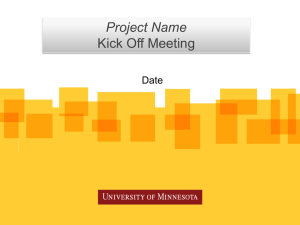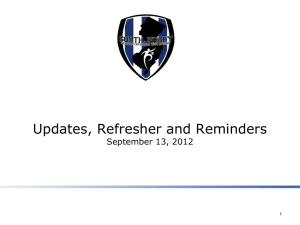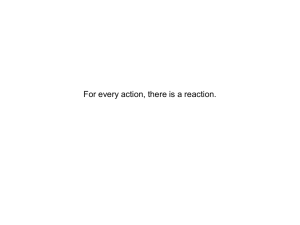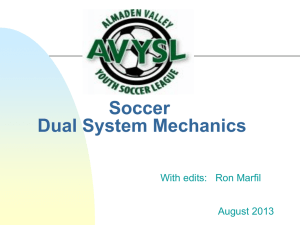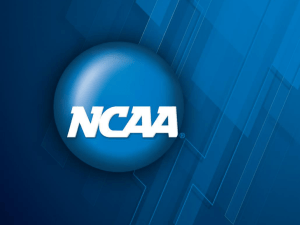Grade 8 Entry Level Exam Review Laws 1
advertisement
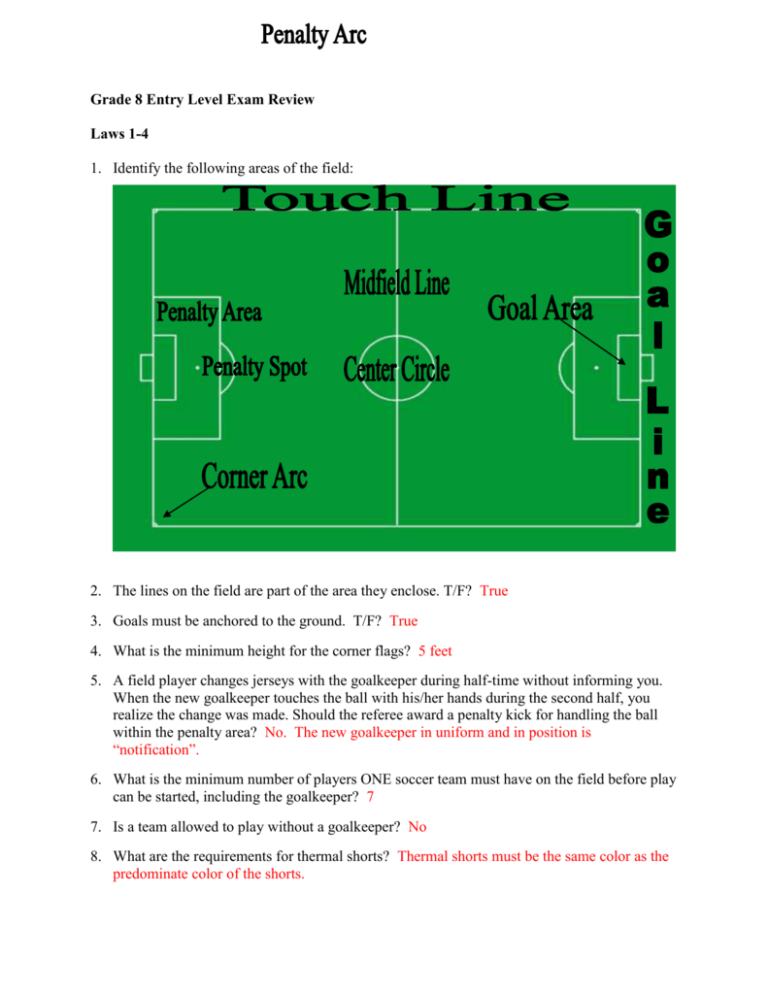
Grade 8 Entry Level Exam Review Laws 1-4 1. Identify the following areas of the field: 2. The lines on the field are part of the area they enclose. T/F? True 3. Goals must be anchored to the ground. T/F? True 4. What is the minimum height for the corner flags? 5 feet 5. A field player changes jerseys with the goalkeeper during half-time without informing you. When the new goalkeeper touches the ball with his/her hands during the second half, you realize the change was made. Should the referee award a penalty kick for handling the ball within the penalty area? No. The new goalkeeper in uniform and in position is “notification”. 6. What is the minimum number of players ONE soccer team must have on the field before play can be started, including the goalkeeper? 7 7. Is a team allowed to play without a goalkeeper? No 8. What are the requirements for thermal shorts? Thermal shorts must be the same color as the predominate color of the shorts. 9. May a player wear tennis shoes? Yes 10. May a player wear golf shoes? No 11. According to the LOTG, is a player allowed to wear jewelry taped to his/her body? No. Jewelry is not allowed to be worn. Laws 5 & 6 12. Any player bleeding from a wound must leave the field of play for treatment. T/F? True 13. The process of inspecting player equipment, player passes and rosters is the responsibility of the assistant referees. T/F? False 14. According to Law 5, who is responsible for keeping a record of the match? The Referee 15. The referee realizes that he/she indicated the wrong direction for a free kick prior to the restart. What should the referee do? The referee may change his/her decision provided the match has not yet restarted. 16. Explain Advantage. The Referee allows play to continue when the team against which an offense has been committed will benefit from such an advantage and penalizes the original offense if the anticipated advantage does not ensue at that time. Laws 7-10 17. Before a corner kick can be taken, time runs out for the first half. Should you allow the kick to be taken? No 18. Before a penalty kick can be taken, time runs out for the first half. Should you allow the kick to be taken? Yes 19. From a kick-off, the ball was kicked forward and went directly into the opponent’s goal. Restart play with a __________. Kick-off 20. A goalkeeper caught and maintained possession of the ball inside his/her goal area but injured himself/herself in the process. You stopped the game to allow a trainer to attend to the goalkeeper. When ready, restart play with a __________. Dropped ball 21. On a dropped ball, when is the ball in play? When the ball hits the ground 22. Can you score directly from a dropped ball? Yes 23. Can you score directly against yourself on a dropped ball? Yes 24. May the goalkeepers participate in a dropped ball? Yes 25. If the game is suspended due to lightening while the ball was in play, what is the proper restart? Dropped ball 26. If the game is suspended due to lightening while the ball was not in play, what is the proper restart? Restart the match according to how the play was stopped (e.g., throw-in, goal kick, corner kick, free kick, etc.) 27. Before the start of the game, a coin is tossed and the team that wins the toss has the option ____________. Which goal to attack 28. When is the ball in play at the taking of a kick-off? When it is kicked and moves forward 29. On which 2 restarts must the ball move forward? Kick-off and penalty kick 30. Before a corner kick is taken, a defender punches an opponent in the goal area. What is the restart? Corner kick 31. A free kick from outside the defenders penalty area, the ball is carried back by the wind into their own goal. What is the restart? Corner kick. A team cannot score directly against themselves from a free kick. Since a goal was not scored and the ball crossed the goal line last touched by the defending team, the restart must be a corner kick. 32. What should the referee do if he/she gets hit by the ball while the ball is in play? Continue play 33. When is the ball out of play? When the whole ball crosses a boundary line (touch line or goal line) or when the referee stops play 34. What happens if the ball, while in play, hits an assistant referee who is standing on the touchline? Continue play. The whole ball would not have crossed the touch line. 35. Ball is kicked directly into goal from a corner kick, not being touched by anyone. What is the restart? Kick-off 36. Ball goes into opponent’s goal directly from a throw in. What is the restart? Goal kick 37. For what reasons can the referee add additional time to a half? Time lost for substitutions, assessment of an injured player, removal of an injured player, wasting time, or any other cause Law 11 38. When is a player in an offside position? When the player is in the attacking half of the field and he/she is nearer to the opponent’s goal line than at least two defenders and the ball 39. During which three restarts can a player not be penalized for being in an offside position? Corner kick, goal kick, and throw-in 40. An attacking player, in an offside position, receives the ball directly from a teammate’s indirect free kick. Should the player be penalized? Yes 41. An attacking player, in an offside position, intercepts the ball from a defender. Should the player be penalized? No, a player should not be penalized if the ball was last played by a defender. 42. A player comes from an offside position to receive the ball from a teammate. At the time the player receives the ball, he is no longer in an offside position. Should the player be penalized? Yes, the player was in an offside position at the time the ball was last played by a teammate and the player interfered with play. 43. An attacker takes a shot on goal and the ball enters the goal, but a teammate in an offside position interferes with the goalkeeper. Should the referee award a goal? No, the referee should penalize the player in the offside position for interfering with an opponent. 44. What part of the player’s body do we not consider when determining offside position? The arms and hands 45. What is the restart on an offside offense? Indirect free kick Laws 12 & 13 46. How long does the goalkeeper have to release the ball? 6 seconds 47. Where can the goalkeeper go within that time interval? Anywhere in the penalty area 48. A player persistently infringes the Laws of the Game. What do you do? The player should be cautioned for persistent infringement. 49. A player strikes a teammate. What do you do? What is the restart? The game should be stopped, the player sent off for violent conduct, and the game restarted with an indirect free kick. 50. A player tackles an opponent, endangering the safety of the opponent. What do you do? What is the restart? The game should be stopped, the player sent off for serious foul play or violent conduct (depending on whether the tackle was made while challenging for the ball), and the game restarted with a direct free kick. 51. A player impedes an opponent without physical contact. What is the restart? Indirect free kick 52. When a throw-in is being taken, an opponent unfairly distracts or impedes the thrower. What do you do? The player should be cautioned for delaying the restart. 53. A player carelessly kicked an opponent while standing near the corner flag. What is the restart? Direct free kick 54. A player standing near his own penalty mark attempted to punch an opponent but missed. What is the restart? Penalty kick 55. While the ball is in play, a goalkeeper, standing in his/her own penalty area, punches an attacker. What do you do? What is the restart? The game should be stopped, the goalkeeper sent off for violent conduct, and the game restarted with a penalty kick. 56. At the taking of a free kick, a team directly kicks the ball into their own goal. What is the restart? Corner kick since a team cannot score against themselves directly from a free kick. 57. A goalkeeper, while punting the ball from the top of the penalty area, goes completely out of the penalty area and into the penalty arc with the ball still in his/her hands. What do you do? The game should be stopped and a direct free kick should be awarded to the opposing team for handling. 58. A player jumped at an opponent in a reckless manner near the halfway line. What do you do? What is the restart? The game should be stopped, the player should be cautioned for unsporting behavior, and the game restarted with a direct free kick. 59. A goalkeeper, with the ball in his/her hands, took more than 6 seconds to release the ball into play. What is the restart? Indirect free kick 60. From an indirect free kick, a team kicks the ball directly into the opponent’s goal. What is the restart? Goal kick since the ball was not touched by a second player. 61. A defensive player tackled an opponent right on the defender’s penalty area line to gain possession of the ball, making contact with the opponent before touching the ball. What is the restart? Penalty kick since the lines are a part of the area they enclose. 62. The goalkeeper, within his/her penalty area, played the ball with his/her hands after it had been deliberately kicked to him/her by a teammate. What is the restart? Indirect free kick 63. A defender recklessly charges an opponent inside the penalty area? What do you do? What is the restart? The game should be stopped, the player should be cautioned for unsporting behavior, and the game restarted with a penalty kick. 64. A defender holds an attacker. The hold starts outside the penalty area but continues inside the penalty area. What is the restart? Penalty kick 65. The goalkeeper, within his/her penalty area, played the ball with his/her feet after it had been deliberately kicked to him/her by a teammate. What do you do? Allow play to continue since the goalkeeper did not play the ball with his/her hands. 66. The goalkeeper, within his/her penalty area, played the ball with his/her hands after receiving it directly from a teammate’s throw-in. What is the restart? Indirect free kick 67. The goalkeeper, within his/her penalty area, played the ball with his/her hands after receiving it directly from an opponent’s throw-in. What do you do? Allow play to continue since it was an opponent’s throw-in 68. A substitute trips an attacker who is on the field while the ball is in play. What do you do? What is the restart? The play should be stopped, the substitute should be cautioned for unsporting behavior, and the game should be restarted with an indirect free kick. 69. Within the penalty area, an opponent prevented the goalkeeper from throwing the ball. What is the restart? Indirect free kick 70. A defender recklessly tripped an attacker outside the defender’s penalty area, but inside the penalty arc. What is the restart? Direct free kick. The penalty arc is not part of the penalty area, so a penalty kick cannot be awarded. 71. During play, a defender punches the referee in the penalty area. What do you do? What is the restart? The game should be stopped, the player sent off for violent conduct, and the game restarted with an indirect free kick. 72. A goalkeeper violently throws the ball at an opponent who is standing in the penalty arc. What do you do? What is the restart? The game should be stopped, the goalkeeper sent off for violent conduct, and the game restarted with a direct free kick (since the contact occurred outside the penalty area). 73. What should you do if a player takes a quick free kick and the ball hits you. The ball then rebounds back to the kicker who passes it to one of his/her teammates. The game should be stopped and play restarted with an indirect free kick to the opponents since the ball did not touch another player before the kicker played the ball a second time. 74. When is an indirect free kick taken outside the kicker’s penalty area in play? When it is kicked and moves 75. When is a direct free kick taken outside the kicker’s penalty area in play? When it is kicked and moves 76. When is a direct free kick taken inside a team’s own penalty area in play? When it is kicked and it leaves the penalty area 77. At the taking of a free kick, an opponent who is less than 10 yards from the ball lunges toward the ball and blocks the kick. What should the referee do? The game should be stopped, the player cautioned, and the free kick retaken. 78. When is an indirect free kick taken inside a team’s own penalty area in play? When it is kicked and leaves the penalty area 79. Name the 7 cautionable offenses by a player. Unsporting behavior, dissent, persistent infringement, delaying the restart, failure to respect the required distance, entering or reentering the field without permission, leaving the field without permission 80. Name the 3 cautionable offenses by a substitute or substituted player. Unsporting behavior, dissent, delaying the restart 81. Name the 7 send-off offenses. Serious foul play, violent conduct, spitting, denying an obvious goal scoring opportunity by committing a foul, denying an obvious goal scoring opportunity by committing a handling offense, using abusive, insulting, or offensive language or gestures, receiving a second caution in the same match 82. Name the fouls that result in a direct free kick/penalty kick. Kicks or attempts to kick an opponent, trips or attempts to trip an opponent, jumps at an opponent, charges an opponent, strikes or attempts to strike an opponent, pushes an opponent, tackles an opponent, holds an opponent, spits at an opponent, and handles the ball deliberately 83. Name the fouls that result in an indirect free kick. The goalkeeper controls the ball with his hands for more than 6 seconds before releasing it from his possession, touches the ball again with his hands after he has released it from his possession and before it has touched another player, touches the ball with his hands after it has been deliberately kicked to him by a teammate, and touches the ball with his hands after he has received it directly from a throwin taken by a teammate. Also, playing in a dangerous manner, impeding the progress of an opponent, preventing the goalkeeper from releasing the ball from his hands, and committing any other offense, not previously mentioned in Law 12, for which play is stopped to caution or send off a player. Law 14 84. Does the kicker need to be identified before the referee signals for the taking of a penalty kick? Yes 85. The player who is fouled must take the penalty kick. T/F? False 86. When is the ball in play at the taking of a penalty kick? When it is kicked and it moves forward 87. At the taking of a penalty kick, the ball rebounds from the crossbar. Before any other player (including the goalkeeper) has touched it, the kicker regains possession of the ball and shoots and scores. What do you do? Is a yellow or red card required? The game is stopped and an indirect free kick is awarded to the defending team. A yellow card is not required. 88. May the goalkeeper move during the taking of a penalty kick? The goalkeeper may move to the left or right, as long as he/she remains on the goal line until the ball is kicked. The goalkeeper may not move forward before the ball is kicked. 89. What should the referee do if the attacking team infringes during the taking of a penalty kick? If a goal is scored, the penalty kick should be retaken. If a goal is not scored, an indirect free kick should be awarded to the defending team. 90. What should the referee do if the defending team infringes during the taking of a penalty kick? If a goal is scored, award a goal. If a goal is not scored, the penalty kick should be retaken. 91. What should the referee do if both teams infringe during the taking of a penalty kick? Whether a goal is scored or not, the penalty kick should be retaken. Laws 15-17 92. When will the referee award a goal kick? When the ball completely crosses the goal line, was last touched by the attacking team, and a goal was not scored 93. When will the referee award a corner kick? When the ball completely crosses the goal line, was last touched by the defending team, and a goal was not scored 94. How far must all opponents be at the taking of a throw-in? Two yards/meters 95. A throw-in must be taken from the point where the ball crossed the touch line or within a yard of that point. T/F? True 96. Can a player score directly from a throw-in? No 97. When is the ball in play at the taking of a throw-in? When the ball leaves the thrower’s hands and touches the plane created by the touchlines 98. A goal can be scored directly from a goal kick. T/F? True 99. Where must the ball be placed at the taking of a goal kick? Anywhere on the goal area line or within the goal area 100. When is the ball in play at the taking of a goal kick? When the ball is kicked and after it leaves the penalty area 101. What happens if the ball does not leave the penalty area at the taking of a goal kick? The goal kick must be retaken. 102. At the taking of a goal kick, the opponents must remain outside the penalty area until the ball is in play. T/F? True 103. How far must all opponents be at the taking of a corner kick? 11 yards from the corner flag/10 yards from the corner arc 104. When is the ball in play at the taking of a corner kick? When it is kicked and moves 105. From a corner kick, the ball rebounds off a goal post directly back to the player who took the corner kick and he/she then kicked the ball. What should the referee do? The game should be stopped and an indirect free kick should be awarded to the defending team since the ball did not touch another player before being touched a second time by the kicker. 106. Can a team score directly from a corner kick? Yes 107. On a corner kick, the ball curved in the air completely across the goal line, returned onto the playing field and was then kicked into the goal. What is the restart? Goal kick Mechanics 108. What is the AR’s position at the kick-off? Even with the second-to-last defender 109. What is the AR’s signal for a Throw-in? Goal kick? Corner kick? What if for each of the restarts above, the ball leaves the field of play but immediately returns? The flag should be raised in the air first to alert the referee to stop the game and then the AR should indicate the throw-in, goal kick, or corner kick. Foul? Offside? Penalty kick (that the referee has not seen)? Goal? What if the ball enters the goal but immediately returns to the field of play? Run up the field a short distance toward the halfway line to affirm that a goal has been scored. If the ball briefly but fully enters the goal and is continuing to be played, raise the flag vertically to get the referee’s attention and then, after the referee stops play, put the flag straight down and run up the field a short distance toward the halfway line to affirm that a goal has been scored. Substitution? o When does the AR bring down the flag? Once the substitution is acknowledged by the referee 110. The AR should raise the flag every time there is a player in an offside position. T/F? False 111. How long before the game should the referee crew arrive at the field? 30 minutes 112. At the beginning of each half, the assistant referees should keep the flag furled (rolled up) until he/she is ready for the game to start. T/F? True 113. Where should the lead assistant referee stand at the taking of a corner kick? In line with the goal line but far enough back to be out of the way of the player taking the corner kick. No distance is specified. 114. Any time you want to stop the game for a foul, you must blow your whistle. T/F? True 115. Where should the lead AR be at the taking of a penalty kick? At the intersection of the penalty area line and the goal line 116. At the end of the game, when should the referee and the assistant referees leave the field together as a team? They should always leave the field together as a team.
